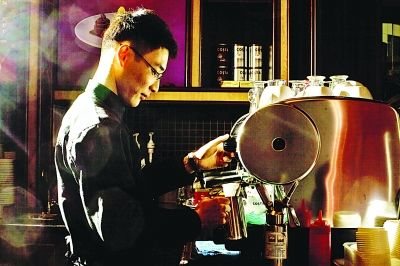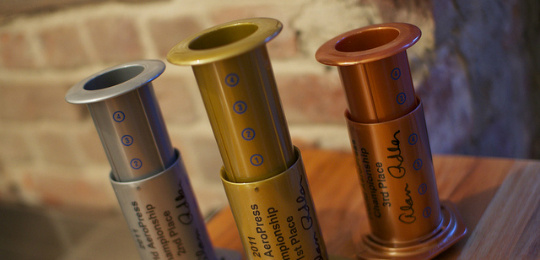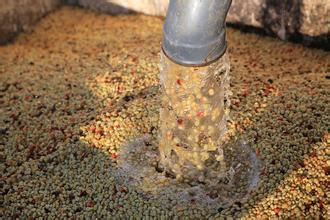Ways to improve the tasting ability of baristas how can baristas improve their ability to taste coffee?
How do coffee cup testers train their sense of taste? if you are working as a barista but don't know how to taste coffee, or if you have poor evaluation ability, try the following professional advice provided by Chongqing Brista barista barista training School. Interested people may try to train themselves to more accurately describe the taste and characteristics of coffee.
What is the purpose of tasting?
There is a saying often quoted that "describing music is like dancing to express architecture". Most people have the ability to taste it. The sharpness and preference for a particular taste varies from person to person and is subjective; some are born, some are related to experience and memory. Learn to be a connoisseur who tastes purposefully by distinguishing different tastes and describing them, making it easier for people to understand and feel the interaction between different flavor elements. Remember, it not only needs to be careful, but also needs to express those careful official feelings as a whole.
What do we taste? What do we feel?
There are 5 kinds of flavors: bitter, salty, sour, sweet and fragrant. Taste is only part of the functional analysis, and other parts include: aroma, touch (thick texture Body, taste Mouthfeel), trigeminal sensation (spicy, cool, acidity, taste).
The above official sensations all influence each other, and different qualities of one official sense will mask or strengthen another, such as the aroma of citrus acid and lemon. The individual sensory qualities of many official senses influence each other. For example, sweetness reduces bitterness and sour taste. Long-term immersion in any official senses will affect your sensitivity to them. When we do sensory analysis, we should keep in mind that the senses become tired after trying too much taste, or that it will be very difficult if we eat something heavy before tasting it for the purpose.
In the official sense test, we should first distinguish the characteristics of various flavors, and then distinguish their strong intensity. Discrimination and measurement, this is the analysis of official sense.
Training and practice
Everything is the same, the analytical ability of official sense comes from training and practice. First of all, the main tasting steps of the basic practice are contact time and the aroma produced by sucking coffee. Suck loudly so that the coffee covers the entire taste buds, the back of the mouth, and up to the nose.
Once we understand the steps of tasting, we can train our taste buds to identify certain taste traits. The most direct training technique is to use sweet, salty and sour solutions.
First, prepare the above three solutions with sugar, salt and lemon juice and adding water.
Then, the three solutions were diluted to three different concentrations. The original first solution can be changed into half the concentration by adding water to become the intermediate concentration solution of the second kind. Finally, in the same way, water is added to the second solution into a dilute third solution.

First test:
Ask another person for help, prepare the above 9 unlabeled solutions, and then try to taste them into sweet, sour and salty groups.
Second test:
After tasting, they were classified into three groups: the first high concentration, the second medium concentration and the third low concentration.
The third test method:
Three different flavors and different concentrations of 9 solutions were mixed with different combinations, for example, medium concentration sour, low concentration sweetness and low concentration saltiness.
This test can help you learn how different flavor elements mask or reinforce other flavors. This kind of practice method is very difficult, when using this method to test professionals, often do not score but draw a curve to grade, few people can get a full score.
The fourth test method (trigonometric intersection):
Use two different kinds of coffee and prepare three unmarked cups of coffee, two of which are the same kind of coffee and the other is different kinds of coffee. Depending on the two types of coffee you choose, this test may be simple or difficult, but in any case, it will make you begin to notice your taste experience.
Fifth test (mixed):
Prepare at least three different coffees, then take the same amount from the three coffees and mix them into the fourth mixed coffee. You will taste and tell how the three kinds of coffee are different; when tasting the mixed coffee, you will try to taste the different characteristics of each different coffee in the mixed coffee.
Sixth test (temperature):
Prepare dilution solutions at different temperatures. Which smells are missing in the heat? Which flavors are strongly displayed at different temperatures? In the diluent of more than one solution, which flavors are more visible at different temperatures? How does the taste change when the diluent cools?
How do we practice the quality and quantity of braided taste based on official experience? You can test the aroma of ground coffee powder with the trigonometric cross method mentioned above.
Contact Tactile Sensation is one of the most difficult experiences of learning how to braid the quality and quantity of flavor. If you can lock on a certain flavor and think about which part of your taste buds you taste, its concentration, and how long you stay, you will begin to experience the thick texture and taste of the taste.
The article comes from Chongqing Bailesta training Institute.
Important Notice :
前街咖啡 FrontStreet Coffee has moved to new addredd:
FrontStreet Coffee Address: 315,Donghua East Road,GuangZhou
Tel:020 38364473
- Prev

The difference between Smart Cup and Philharmonic pressure Coffee making
Some time ago, we put forward some suggestions on making coffee utensils and received feedback from many friends: how did you choose the utensils? Whether it's making a cup of Espresso or filtered hand coffee, the key point is to master the six elements. The specific grinding degree of powder to water corresponds to the optimization of cooking methods (soaking method, mixing method, filter, etc.)
- Next

The treatment method of Coffee Bean-- the method of washing Coffee Bean
Dry treatment (secado), also known as natural all-day exposure (natural). After the coffee fruit is actually picked, it is dried directly in the sun. According to the weather conditions, it is generally necessary to dry the coffee beans for 2 weeks to reduce the water content of the coffee beans to 10%, 12%, and then use a machine to remove the dried peel and pulp. The raw bean processing plant (beneficio) usually retains the parchment shell on the outside of the coffee bean when the raw bean is stored.
Related
- What is the meaning of lactic acid fermentation with coffee bean treatment?
- How to judge the state of foam by sound?
- How does the latte pull out the unicorn pattern? Come to get for a little trick to improve the flower pull!
- Will flower pulling affect the taste of the latte?
- Do you know the history of coffee?
- The difference between honey treatment and sun washing what is raisin honey treatment?
- What kind of milk can a novice use to make coffee foam to keep the foam longer? The correct method and skills of milking tutorial sharing
- Why do washed coffee beans taste sour? Flavor characteristics of washed Coffee
- Introduction to the skill of how to practice the size and height of water injection around the circle of hand-brewed coffee
- How do beginners practice coffee flower drawing from scratch?

